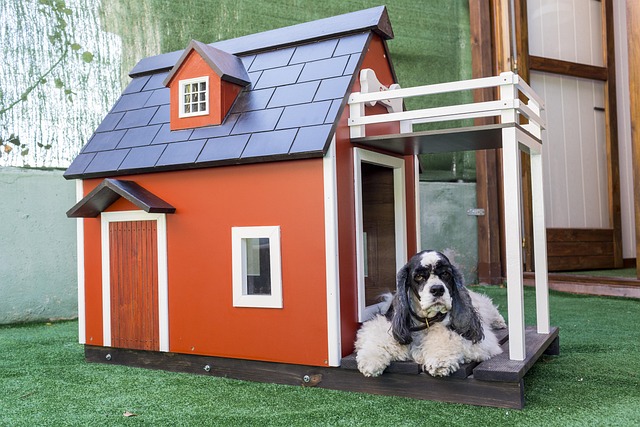Fire-rated structural framing is essential for building safety in high-risk areas, using materials like treated wood or steel and adhering to local building codes. Strategic placement of walls, floors, and roof trusses enhances occupant safety and minimizes structural damage. Compliance with code standards, especially for high-rise buildings, prioritizes safety and structural integrity. Fire-rated drywall, insulated walls, and precise fire stops disrupt fire progression, offering vital evacuation time. Collaboration with engineers ensures balanced design practices for optimal protection during fires while maintaining structural framing design integrity.
Fire safety is a critical aspect of construction, ensuring buildings provide a secure haven during emergencies. This article explores fire-rated and code-compliant framing, essential elements for any structural framing design. We delve into understanding fire resistance ratings, navigating building codes, and strategic design choices to enhance protection. Additionally, it highlights the significance of proper framing techniques for long-term structural integrity. By adhering to these guidelines, architects and builders can create safe, resilient structures.
Understanding Fire-Rated Structural Framing
Fire-rated structural framing is an essential component in ensuring the safety and integrity of buildings, especially in high-risk areas prone to fires. This specialized framing incorporates specific design considerations and materials that enhance a structure’s resistance to fire damage. By understanding the principles behind fire-rated structural framing, architects, engineers, and builders can make informed decisions when creating code-compliant designs.
The key lies in selecting appropriate fire-resistant materials such as treated wood or steel, which are designed to delay the spread of fire and provide crucial time for evacuation. These materials are often classified by their performance levels, indicated by ratings from local building codes. Effective structural framing design involves strategic placement of walls, floors, and roof trusses, creating a robust barrier that slows down the movement of flames and heat. This method not only protects the occupants’ safety but also minimizes structural damage, ensuring the longevity of the building.
Code Compliance for Safe Construction
In the realm of construction, ensuring safety is paramount, and this starts with adhering to strict code compliance standards. When it comes to structural integrity, particularly in high-rise buildings or public spaces, fire-rated and code-compliant framing plays a pivotal role. This involves meticulously designed structural framing that meets or exceeds local building codes and fire safety regulations. By integrating these measures, builders and architects can create robust structures that provide refuge during emergencies while minimizing potential hazards.
Code compliance for safe construction encompasses a comprehensive understanding of building materials, their interactions, and the unique challenges posed by different environments. This includes selecting appropriate framing materials, ensuring proper spacing and dimensions, and implementing effective fire-stopping techniques. A well-designed structural framing system not only enhances the overall safety of a building but also contributes to its longevity and resilience against various external factors.
Design Considerations for Optimal Protection
When designing fire-rated and code-compliant framing, optimal protection starts with thoughtful considerations in structural framing design. Key aspects include selecting appropriate materials that meet or exceed local building codes for flame spread resistance and thermal performance. Incorporating components like fire-rated drywall, insulated walls, and ceiling systems helps create a robust barrier against the devastating effects of fire.
Moreover, strategic placement of fire stops at doorframes, windows, and joints disrupts the path of fire and smoke, providing precious time for safe evacuation. Balancing these design elements requires careful coordination with building engineers and compliance with relevant standards to ensure the structural framing design not only meets safety requirements but also contributes to the overall integrity of the structure during a fire event.
Ensuring Longevity Through Proper Framing Techniques
Ensuring the longevity and safety of any building structure starts with robust structural framing design. When it comes to fire protection, proper framing techniques play a pivotal role in mitigating risks and ensuring code compliance. By implementing fire-rated materials and strategically designed structural elements, builders can create sturdy frames that withstand not just regular wear and tear but also intense fires.
This involves selecting the right materials like fire-resistant lumber or steel, properly spacing joists and beams to prevent bowing or buckling during a fire, and incorporating firewalls and compartmentalization strategies. These measures significantly slow down the spread of flames and smoke, providing valuable time for occupants to evacuate safely. Moreover, adherence to these techniques ensures that the building’s structural integrity remains intact, assuring longevity and enhancing overall safety assurance.
Fire-rated and code-compliant structural framing is a vital component in ensuring the safety and longevity of any building. By understanding the importance of these components, designers and builders can create robust structures that not only meet regulatory standards but also provide superior protection against the devastating effects of fire. Implementing optimal design considerations and adhering to proper framing techniques are key steps toward achieving a safe and sustainable built environment. When it comes to structural framing design, prioritizing fire safety is non-negotiable for any modern construction project.
